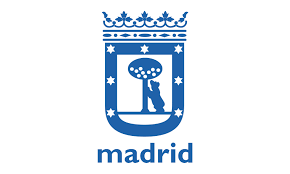
Risk management
What are the steps in a risk management process and where do I begin? And once risks are identified, how are they evaluated and what are the strategies for mitigation and management?
Risk is the likelihood of an event and its consequences. Businesses face risks that can threat their very existence, which is where the risk management element comes in: the process of preparing for such eventualities.
By identifying what can go wrong, risks can be reduced or prevented, and the impacts lessened, which is a central part of successful growth. Being prepared not only reduces the chance of failure, it also deepens understanding of a business’s critical success factors.
Risk management
Start off with an overview of the risk management process
from Lloyds Bank Foundation
WHAT? A guide to help you identify risks relating to all business activities and define the systems and controls to deal with the impact. It also shows you how to consider the chance of a particular event happening, and decide how to respond to risks occurrences and then finally measure the effectiveness of the risk management system.
WHEN? You or your board are seeking to implement a more robust risk management process and directors require a comprehensive overview of what’s required. Or an unexpected event has occurred that has damaged the business.
WHY? Allows better management of risks that do occur, rather than worsening a risk through chaotic management. It also improves business planning, priority and objective setting as well as management decision making.
Risk management processes
Learn the risk management guidance for entrepreneurs
from ERMA Risk Management Organisation
WHAT? An in-depth article which identifies key differences between strategic analysis, such as SWOT and risk management, for purposes of business planning and implementation
WHEN? You are embarking on new ventures, product launches or service enhancements
WHY? Enables entrepreneurs to position risk within the context of the array of other tasks occurring during the startup or early growth phases
OTHER RESOURCES?
>> Risk insights for entrepreneurs from Entrepreneurship in a Box
Strategic risks
An in-depth analysis of strategic risks
from Madrid Local Government
WHAT? An analysis of the trends, barriers to entry and balance of negotiating power affecting the trading landscape of the firm, including sales, distribution and marketing
WHEN? You want to identify strategic challenges or opportunities within the competitive environment that can impact on the customer value proposition, sales growth, customer service or proposition quality
WHY? The competitive landscape may be tougher than you thought. Customer preferences of a market, sector or industry can quickly change, driven by technological, social or market changes
Health & safety
Review this analysis of health & safety risks and compliance
from Bytestart
WHAT? An article that details relevant health & safety risks to staff, customers and other stakeholders
WHEN? Always relevant - your business operates in a legal environment that is subject to wide reaching and changing laws and rules
WHY? Failure to comply with relevant laws and regulations can lead to fines, sanctions, trading restrictions or closure
Financial risks
Understand how to identify financial risks
from Startup.ie
WHAT? A sensitivity analysis to changes in financial performance. Consideration of realistic, best and worst case financial forecasting. Excessive dependency on a single customer.
WHEN? You are preparing a business plan or budget, or seeking finance. You could also be evaluating a project finance decision.
WHY? Financial risk can relate to cashflow, interest rates, currency fluctuation, profitability, investment requirements or taxation
OTHER RESOURCES?
>> Risk management from investor perspective from Smart Company
Operational risks
Contextualise your knowledge with operational and sector-specific risk case studies
from Health & Safety Executive
WHAT? A range of case studies across a variety of sectors. Includes analysis of production, delivery, manufacturing supply chain, procurement, transportation and logistics, technology, data and information systems.
WHEN? You are reviewing the risks associated with all the operational departments of the business for business continuity planning or disaster recovery processes. Operational risks will typically be the broadest and most business specific aspect of risk management.
WHY? Regulators may require this by law or investors may expect this to be a key part of day to day activity management across the firm. Also, it forms a key aspect of business continuity planning including disaster recovery.
OTHER RESOURCES?
>> Start-up Nation on different types of risk
Risk management method
Evaluate and prioritise risks
from Entrepreneur.com
WHAT? An article with concise steps for risk analysis. Many businesses find that considering likelihood and impact as high, medium or low (and assigning a value of 3, 2, 1) is adequate for their needs. Multiplying likelihood by impact provides for a prioritisation.
WHEN? You need to direct limited resources to the most important risks
WHY? Evaluating risks determines the likelihood and impact and whether to accept the risk or take action to prevent or reduce it. Risks will change as the external environment changes and businesses grow or other factors alter. Risks should therefore be regularly looked at.
OTHER RESOURCES?
>> Overview of evaluation and prioritisation stages from HR Daily Advisor
Risk mitigation
Read guidance on how to mitigate and manage risks
from Business Queensland
WHAT? This guide helps you to understand how to treat risks effectively, then review and update your risk management plan
WHEN? You have conducted your risk analysis and the impact of risk and now need to mitigate potential negative impacts
WHY? Regular monitoring of your risk management process is essential as this ensures all risks have been identified and counter measures put in place. Allows businesses to establish the cost of mitigating a risk, which can be so high that doing nothing makes more financial sense. For example, if a fire or a flood means you can’t access your workplace: you can’t avoid all the risk, but you can minimise disruption.
Business continuity planning
Take time to read an official guide on risk management and business continuity planning
from HM Government
WHAT? A toolkit to efficiently develop a BCP on the back of a risk management process
WHEN? You are developing a business continuity plan or disaster recovery plan
WHY? Having a plan to manage risks when they occur closely overlaps with business continuity planning
OTHER RESOURCES?
>> Explanation of the difference between risk management and business continuity planning, from DRI International
>> Creating a business continuity plan from the Federation of Small Business
Risk accountability
Discover the ins and outs of assigning ownership of risk management
from the Project Risk Coach
WHAT? A PDF risk management guide for small to medium businesses. Understanding the overall function and processes of risk management at the outset helps assign ownership
WHEN? You are establishing where and how to assign ownership for risk management
WHY? Without clear accountability, management of risk can fail. In small businesses, the finance director or chief executive often overseas the risk management. In larger businesses, where there may be a risk management committee, this would often be led by a non-executive board member.
































































